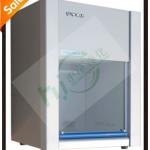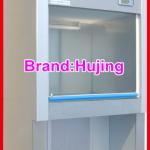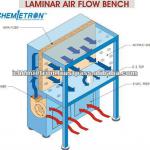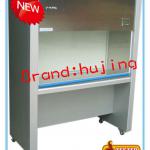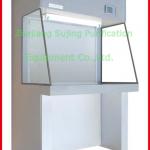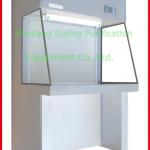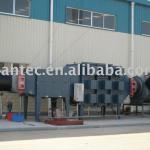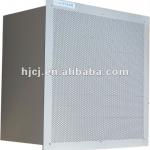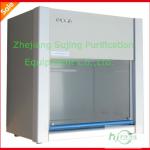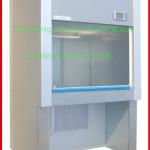Ozonator for Cooling Towers
| Place of Origin:Guangdong China (Mainland) | Brand Name:Quanju | Model Number:QJ-8010Y | Color:white |
| Material:stainless steel | design:state-of-the-art | warranty:1 year | Ozone output:200g/h |
| Power cunsumption:3600w | Power source:110v/220v | Net weight:157kg | Size (L*W*H):70*75*143 cm |
| Tube lifespan:>=20,000 hours |
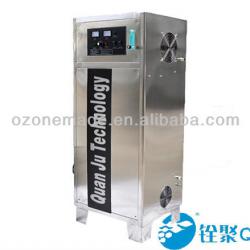
Description
The ozone will be broken down into oxygen without any residual contamination. It can promptly kill bacteria propagule, spore, fungus all-pathogenic micro-organisms.
For Swimming pool,hospotal,food processing and packing workshop, it can obtain a very good effect for disinfection, sterilization, purification, improvement of hygienic quality of food, extending the shelf life of food. It can reach the national requirement for food hygienic processing and food without any residual contamination. It also can reduce pesticides and fertilizers residues on raw fruits and vegetables.
Specifications
Ozone output : 200g/h Ozone concentration : Oxygen Source:80—120mg/L
Cooling type : air-cooled Power cunsumption : 3600w
Power source : 110v/220v Frequency : 50Hz
Tube lifespan :>=20,000 hours Tube material : stainless steel 316
Box material : stainless steel 304 Algae removal rate : 98%
Sterilizer rate : 99.99% Size (L*W*H) : 70*75*143 cm
Net weight :157kg waranty: 1 year
| Application |
Modern cooling towers require heavy maintenance to maintain efficiency and operation. Most maintenance includes adding and monitoring biocide level, periodic cleaning of piping and heat exchangers, replacement of corroded parts and blowdown procedures. All this maintenance can be attributed to one single problem - the introduction of organics and microbes to the cooling tower system. Microbial growth leads to the deposit of bioslime along the interior piping of key components. The bioslime induces corrosion, prevents efficient heat exchange and will quickly clog the system if left unchecked.
Although the traditional approach, chemical treatment is no longer the efficient solution to bioslime problems. Advancement in technology had led to the development of a more powerful weapon in the battle against bioslime and corrosion - ozone. Ozone has an oxidizing power 1.52 times greater than chlorine, making it the most powerful oxidizing agent commercially available. Our systems implement ozone to destroy the microorganisms and organics that enter your feed water, and literally shed the bioslime from your cooling tower system. The use of hazardous chemicals is eliminated. Blowdown procedures are eliminated. Maintenance is minimized. Discover the cost savings. Discover the power of O3.
Ozone VS Chlorine
The primary competitor for ozone is chlorine in any of several commercially available forms. It commands more than 90% of the entire US domestic market for bulk water disinfection.
Chlorine’s advantages include highly developed equipment and well established distribution channels for both the equipment and chemical. It is also less expensive than either ozone or UV in terms of capital equipment cost. However, it has several notable drawbacks, and those drawbacks are the primary selling points for ozone.
1.Effectiveness
Chlorine is not as effective a disinfectant as ozone and is markedly less effective against waterborne biohazards such as viruses, spores, and cysts. Chlorine usage is designed around removing bacteria from water; these other hazards can pass through a chlorinated water treatment system and may still pose a hazard.
The data in the following tables illustrate this point. CT Values for Inactivation of Virusesindicate that ozone is six times as effective at deactivating (killing) virus as free chlorine, and nearly 1,500 times stronger than chloramines, a chlorine and ammonia derivative used in an attempt to reduce chlorine’s toxicity and limit formation of trihalomethanes (THMs), which are suspected carcinogens. Similar information is presented in the second table, except the organism of interest is a cyst instead of a virus.
The “CT” value means “concentration times time” and is an EPA method for comparing the effectiveness of different disinfectants. A lower value for CT means that a lower concentration of disinfectant, or a shorter contact time, or a combination of these factors is required to achieve the cited pathogen reductions. In these tables, inactivation is expressed on a logarithmic scale, i.e. 2-log equals a 99% reduction in the number of pathogens; 3-log represents a 99.9% reduction, etc. The units of mg-min/l mean, for example, that a concentration of 6 mg/l chlorine for six minutes, 3 mg/l for 12 minutes, or 1 mg/l for 36 minutes all have the same CT value of 36 (36 = 6 x 6 = 3 x 12 = 1 x 36).
As can be seen from these tables and the literature references, ozone’s effectiveness as a disinfectant is much greater than chlorine and has been well documented.
Disinfectant | Units | Inactivation | ||
2-log | 3-log | 4-log | ||
Chlorine1 | mg-min/L | 3 | 4 | 6 |
Chloramine2 | mg-min/L | 643 | 1,067 | 1,491 |
Chlorine Dioxide3 | mg-min/L | 4.2 | 12.8 | 25.1 |
Ozone | mg-min/L | 0.5 | 0.8 | 1.0 |
UV | mW -s/cm2 | 21 | 36 | not available |
CT Values for Inactivation of Viruses
- CT values were obtained from AWWA, 1991.
- 1Values are based on a temperature of 10°C, pH range of 6 to 9, and a free chlorine residual of 0.2 to 0.5 mg/L.
- 2Values are based on a temperature of 10°C and a pH of 8.
- 3Values are based on a temperature of 10°C and a pH range of 6 to 9.
Disinfectant | Inactivation (mg-min/L) | |||||
0.5-log | 1-log | 1.5-log | 2-log | 2.5-log | 3-log | |
Chlorine1 | 17 | 35 | 52 | 69 | 87 | 104 |
Chloramine2 | 310 | 615 | 930 | 1,230 | 1,540 | 1,850 |
Chlorine Dioxide3 | 4 | 7.7 | 12 | 15 | 19 | 23 |
Ozone3 | 0.23 | 0.48 | 0.72 | 0.95 | 1.2 | 1.43 |
CT Values for Inactivation ofGiardiaCysts
- CT values were obtained from AWWA, 1991.
- 1Values are based on a free chlorine residual less than or equal to 0.4 mg/L, temperature of 10°C, and a pH of 7.
- 2Values are based on a temperature of 10°C and a pH in the range of 6 to 9.
- 3Values are based on a temperature of 10°C and a pH of 6 to 9.

| Packaging Detail:carton,wooden case |
| Delivery Detail:15-30 days after payment,sometime depend on amounts |



